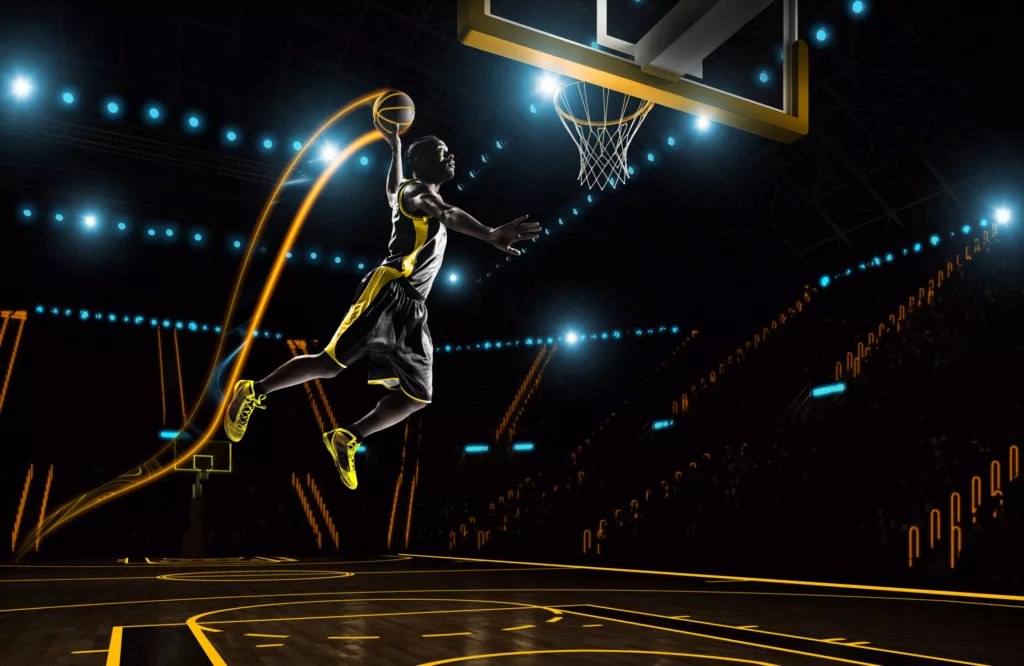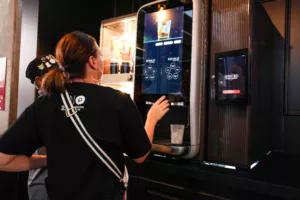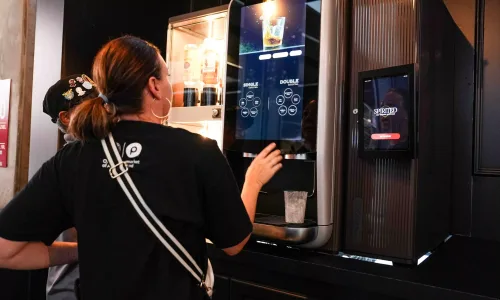KEY TAKEAWAYS
- Players can access rich data and prevent injuries with wearable tech
- Games are becoming more fair with AI referees and goal-line technology
- The fan experience is improving with faster lines thanks to facial authentication
New technology is sweeping across the sports world faster than you can say “touchdown.” AI is poised to issue swift transformations across the field; hardware and wearables are becoming infinitely more capable. Such advancements will touch everyone from stadium execs to players to fans. In this article, we’ll explore everything we know about new tech in sports, where it is, where it’s going, and when you might see it at the stadium or on your device the next time you go to the game.
Wearable Tech: Performance Tracking and Analysis
What was once instinctively driven (e.g. player performance, quality of practice) is now armed with vast reservoirs of data. Coaches and athletes alike are stepping onto the field with a wealth of data about player performance thanks to advanced sensors and wearable devices. For example, Athos offers compression gear that measures muscle activation and fatigue, while Hexoskin’s smart shirts monitor heart rate, breathing, and sleep patterns. For hydration tracking, AURA Devices’s smart band measures body water percentage in real time.
GPS tracking has also become ubiquitous, with Catapult Sports leading the way in player positioning and movement analysis. In team sports, optical tracking systems have transformed tactical analysis. TRACAB uses multiple cameras to capture player and ball positions, while Second Spectrum’s AI-powered system, used by the NBA, provides advanced analytics on player movements and team strategies.
Another powerful capability of wearable tech is injury prevention and assessment. These systems can predict potential injuries before they occur with high accuracy that guides coaches and players toward preventive measures. Smart mouthpieces like FIT Guard, for example, are used to detect and assess head impacts in contact sports.
Technology-Enabled Sports Equipment
These advancements don’t stop at what you wear. They extend to the balls, racquets, and other equipment used during game time. Companies like Wilson are embedding sensors in basketballs and footballs to track shot accuracy and spin rate. These “smart” pieces of equipment provide real-time feedback during practice, helping athletes at all levels improve their technique.
Officiating and Fair Play
Gone are the days of referees and fans agonizing over the validity of a play. With the latest wave of technology, subjectivity is now being supported with on-the-spot data and precision analysis. While Video Assistant Referee (VAR) has existed since the late 2010s, Hawk-Eye’s goal-line technology has become indispensable in soccer, providing definitive answers on whether a ball has crossed the line. In tennis, the same company’s electronic line-calling system has made this traditionally official-heavy sport more accurate than ever.
Baseball has introduced automated ball-strike systems (ABS) in some minor leagues, using AI and motion capture to call balls and strikes. While promising, there have been some issues with the system keeping up with the speed of play. The computer can’t always distinguish between the ball and all the other objects and people who enter the frame.
The Fan Experience
Players and coaches are far from the only ones benefiting. Virtual and augmented reality are creating immersive experiences. NextVR, now owned by Apple, has pioneered VR broadcasts of live sports events, while the NBA has partnered with Magic Leap to develop AR experiences that bring stats and replays into your living room.
Mobile apps from companies like FanDuel and DraftKings have gamified the viewing experience, allowing fans to participate in fantasy leagues and sports betting with real-time updates. Social media also plays its part as well. 91% of consumers say they are more likely to contribute content or comments to a brand if the company is re-sharing it, and that’s a powerful incentive when it’s linked to their favorite sports team.
The stadium experience is also getting incrementally stronger, with old nuisances like long lines for entry and concessions slowly being conquered. Wicket offers facial authentication to help streamline game day experiences for fans, allowing them to use their face as their ticket to save organizers money and speed up long lines. Concessions are also being slowly revolutionized by checkout-free markets, as well as mobile ordering and delivery without having to leave their seats.
All of these possibilities directly contribute to creating a home-field atmosphere that fans return to time and time again. Going to a live pro sports game isn’t cheap—even when you’re in the cheap seats—and teams need to do everything they can to deliver a unique and thrilling experience fans can’t get anywhere else. In fact, it ranks even higher in importance to fans than the quality of the game itself according to a 2022 survey by Deloitte.
By leveraging cutting-edge technology that makes it easy for fans to explore, navigate, and customize their live experience, teams can generate the loyalty and consistency it takes to remain competitive with other entertainment options.
Stadiums
Stadiums themselves are growing ever more advanced. AI and data analytics are being employed to manage crowd flow and enhance safety, while smart building systems optimize temperature, energy efficiency, and comfort. Not to mention, sustainability initiatives like on-site solar power and smart resource management are paving the way for greener stadiums.
Tech That Doesn’t Fully Exist in Sports Yet, But Foreseeably Will
Why stop at the tech we already have in our hands? While the tech below may still be in its earliest development or trial periods, it may yet become commonplace. For now, some of these concepts might sound like science fiction, but we’re steadily inching toward this technologically glittering future.
- Brain-Computer Interfaces (BCIs): While still in the early stages, BCIs could potentially allow athletes to control equipment or receive feedback directly through brain signals. This could revolutionize training and performance optimization. Elon Musk is actively developing BCIs as we speak.
- Holographic Replays and Coaching: Feels so Star Wars, doesn’t it? Advanced holographic technology could create 3D replays of plays or entire matches, allowing coaches and players to analyze performances from any angle in real-time.
- Nano-tech Performance Gear: Scary sounding? Perhaps. But intriguing nevertheless. Clothing and equipment embedded with nanotechnology could adapt in real-time to an athlete’s body temperature, hydration levels, or muscle fatigue, optimizing performance.
- Genetic Performance Optimization: As our understanding of genetics improves, we might see highly personalized training and nutrition plans based on an athlete’s genetic profile.
- Exoskeletons for Rehabilitation: While exoskeletons are being developed for medical use, sports-specific versions could help injured athletes recover faster and more effectively.
Embracing the Future of Sports Technology
As we look to the future of sports technology, it’s clear that we’re on the cusp of a new era in athletics. As sports continue to explore and implement these advancements, it will be crucial to address ethical considerations, ensure fair play, and maintain the human element that makes sports so compelling.
The challenge moving forward will be to harness these technologies in ways that enhance rather than detract from the spirit of competition and the sheer joy of the game. Ultimately, the future of sports technology promises a more connected, data-driven, and immersive world of athletics. As we stand on this technological precipice, one thing is certain: the way we play, watch, and experience sports will never be the same.







